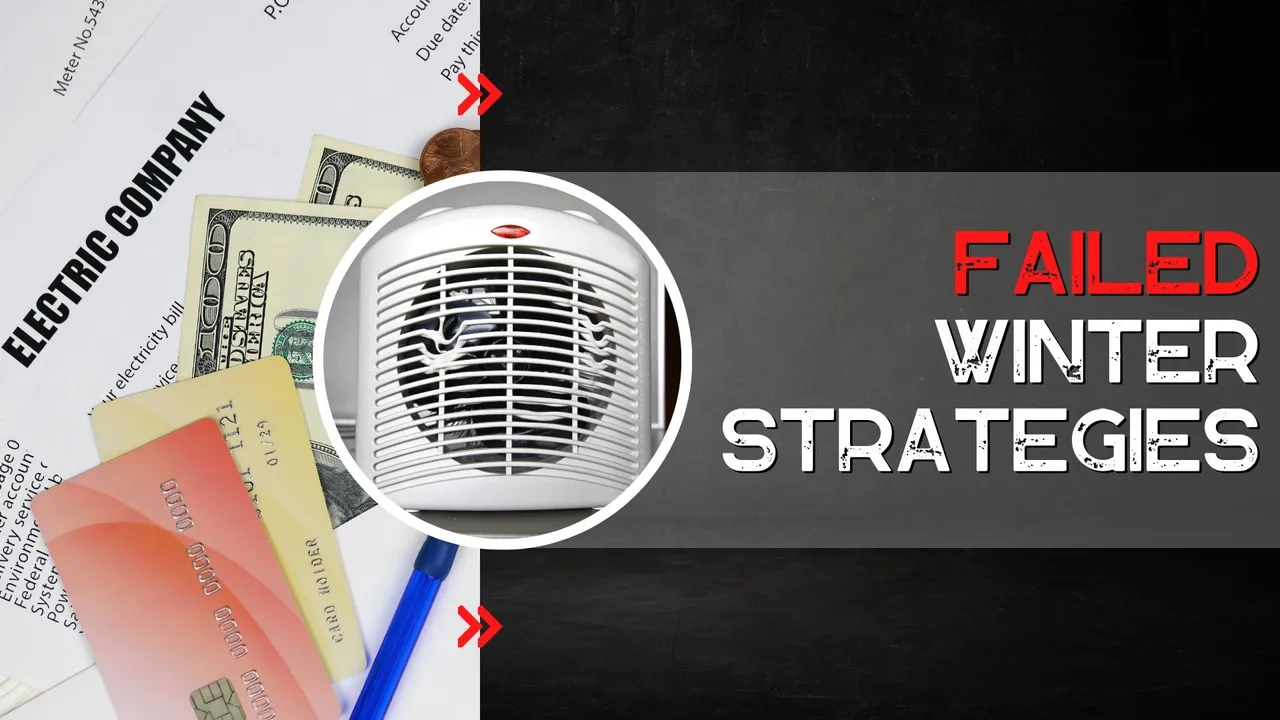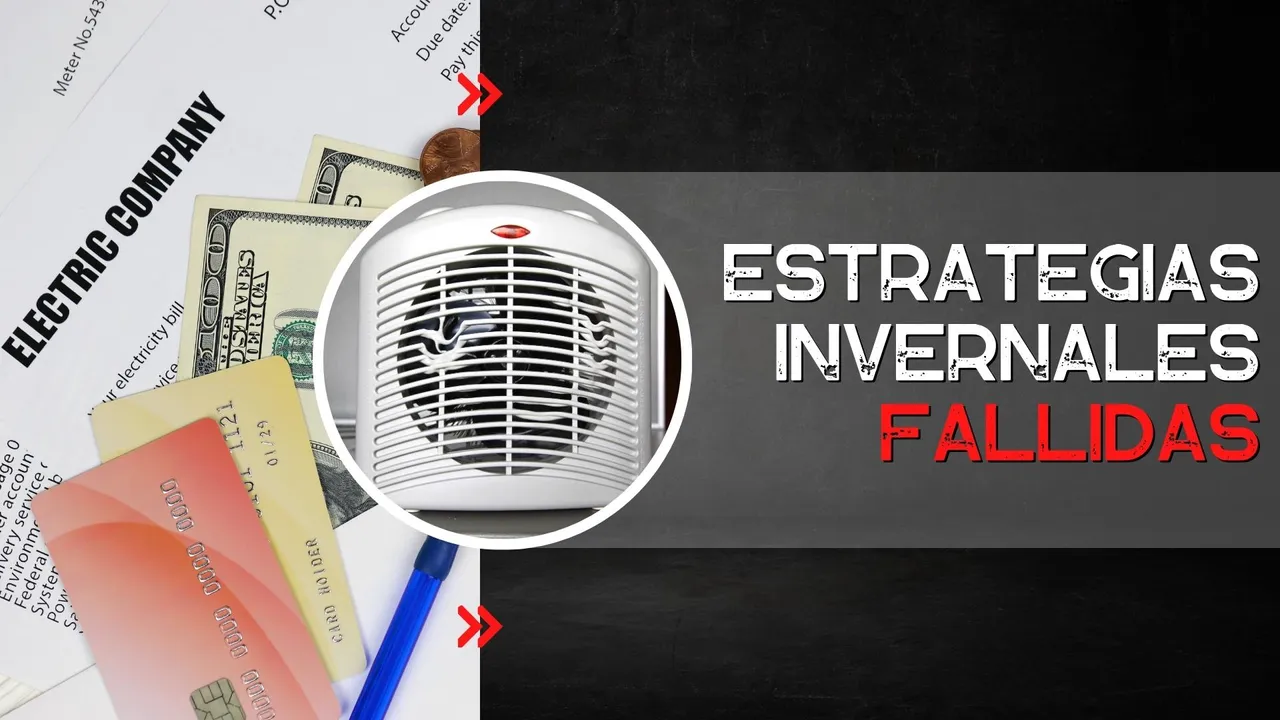

Hello, #HomeSolutions friends. Today I want to share an anecdote I remembered while writing last week's post for this community. Like that one, this anecdote is also about saving electricity. As many of you already know, I live in Mexico. Here, the seasons are more or less defined. However, temperatures are not so extreme as to justify houses having artificial air-conditioning systems, at least not in the state where I live.
Baje para ver la versión en español o haga clic - AQUÍ -
But that is only in theory, as I have always felt quite cold during the winter. So when Leo's first winter came, I was very worried. At the time, Leo was only 6 months old, and I didn't want the cold to make him uncomfortable or affect his sleep. So, in addition to getting lots of warm pyjamas, we bought a portable heater, the kind that simply plugs into the electricity and emits warm air thanks to a heating element.
I was completely happy with the gadget. Since Leo had night feedings of breast milk, I had to uncover during the night at least once, so the heater helped me a lot too, so I didn't feel so cold while Leo was feeding. That's how we spent the last two months of that year, comfortable and happy thanks to the blessed portable warmer. However, as is often the case, not everything can be perfect. Everything has its downside, and this appliance is no exception.
In Mexico, electricity is billed every two months. It was in mid-January that we received an unpleasant surprise, our reality check. All those nights of using the heater translated into a significant increase in the electricity bill, almost five times more than usual, around 50 dollars, maybe even a little more. As you can imagine, this came as quite a shock. It was clear that we had to take drastic measures, as we could not afford such an increase in electricity consumption, especially with all the expenses associated with having a baby.

At first, my husband wanted to get rid of the heater altogether, and I understand that. We ended up paying more in electricity than the appliance itself cost. However, since I was the one who bought it, the decision was mine. Also, at the time, I was the one who was in charge of paying the electric bill, so his opinion was just an input, nothing more. What I decided was to use the heater only to warm up the room a little, and then turn it off when it reached a suitable temperature. This reduced consumption by more than half. Fortunately, the winter here is short, and by February we had put the heater away permanently.
That was the last winter we used it as a heater. Fortunately, it was not a totally wasted investment, as it can also function as a fan. Therefore, we can also use it in summer. Although it doesn't consume as much energy this way, we are careful not to leave it on all night, although it is no longer at home, but at my husband's work where it is more needed (and we don't pay for the electricity, haha). The moral of this story is simple: always check the consumption of your appliances when you buy them.
You can find a tool to calculate the electricity consumption of a device and how it would affect your electricity bill at this link. This way, you can avoid unpleasant surprises like the one I experienced.

Estrategias Invernales Fallidas



Hola, amigos de #HomeSolutions. Hoy quiero compartir una anécdota que recordé mientras redactaba mi publicación de la semana pasada para esta comunidad. Al igual que esa, esta anécdota también se trata del ahorro de energía eléctrica. Como muchos ya saben, vivo en México. Aquí, las estaciones están más o menos definidas. Sin embargo, no hay temperaturas tan extremas como para justificar que las casas tengan sistemas de climatización artificial, al menos no en el estado donde resido.
Pero eso es solo en teoría, ya que siempre he sentido bastante frío durante el invierno. Por eso, cuando llegó el primer invierno de Leo, estaba muy preocupada. En ese momento, Leo tenía apenas 6 meses y no quería que el frío lo incomodara o afectara su sueño. Por lo tanto, además de conseguir una buena cantidad de pijamas abrigadoras, compramos un calentador portátil, de esos que simplemente se conectan a la electricidad y emiten aire caliente gracias a una resistencia.
Yo estaba completamente feliz con el aparatejo. Dado que Leo hacía tomas nocturnas de leche materna, tenía que destaparme durante la noche por lo menos una vez, así que el calentador me ayudaba mucho a mí también a no sentir tanto frío mientras Leo realizaba sus tomas. Así pasamos los últimos dos meses de ese año, cómodos y felices gracias al bendito calentador portátil. Sin embargo, como suele ocurrir, no todo puede ser perfecto. Todo tiene su lado negativo, y este electrodoméstico no es una excepción.
En México, se factura la electricidad cada dos meses. Fue a mediados de enero cuando recibimos una sorpresa desagradable, nuestro golpe de realidad. Todas esas noches de uso del calentador se tradujeron en un aumento significativo en la factura eléctrica, casi cinco veces más de lo habitual, alrededor de unos 50 dólares, quizás incluso un poco más. Como podrán imaginar, esto nos dejó bastante sorprendidos. Era evidente que teníamos que tomar medidas drásticas, ya que no podíamos asumir ese aumento en el consumo de energía eléctrica, especialmente con todos los gastos relacionados con tener un bebé.

Al principio, mi esposo quería deshacerse del calentador por completo, y lo entiendo. Terminamos pagando más en electricidad de lo que costó el aparato en sí. Sin embargo, como yo fui quien lo compró, la decisión era mía. Además, en ese momento, yo era la que se encargaba de pagar la factura eléctrica, así que su opinión era solo un aporte, nada más. Lo que decidí fue usar el calentador solo para calentar un poco la habitación y luego apagarlo cuando alcanzara una temperatura adecuada. Esto redujo el consumo en más de la mitad. Afortunadamente, el invierno aquí es breve, y para febrero ya habíamos guardado el calentador de forma permanente.
Ese fue el último invierno en el que lo utilizamos como calentador. Afortunadamente, no fue una inversión totalmente desperdiciada, ya que también puede funcionar como ventilador. Por lo tanto, en verano también podemos emplearlo. Aunque no consume tanta energía de esta manera, tomamos la precaución de no dejarlo encendido durante toda la noche, aunque actualmente ya no se encuentra en casa, sino en el trabajo de mi esposo donde es más necesitado (y no pagamos la luz, jajaja). La moraleja de esta historia es simple: siempre revisen el consumo de sus aparatos al momento de adquirirlos.
Pueden encontrar una herramienta para calcular el consumo eléctrico de un dispositivo y cómo afectaría su factura eléctrica en este enlace. De esta manera, podrán evitar sorpresas desagradables como la que yo experimenté.
Thank you very much for reading me, see you in the comments
Muchas gracias por leerme, nos vemos en los comentarios



